Farther north we did go. We made it all the way up to Shreveport Louisiana, to stay at the Elks lodge.
This sign is at the entrance to the lodge property, then it is a short drive to the lodge.Around the bend.
Past the pool, around the corner, and we are there.This was our destination for the week. After we set up we headed in for a quick drink, and some information gathering.The view off the back patio.
This guy may look familiar to some of you, it is the SR-71 Blackbird. Some people still remember when Russia shot one down during a mission. The Blackbird holds several world records for its class... "absolute speed": 2,193.167 mph, and "absolute altitude": 85,068.997 feet. Its career in service lasted almost 24 years.
This is the Boeing (Douglas) B-47E Stratojet. It was the worlds first swept-wing jet bomber. Its official first flight was in 1947, production deliveries began in 1951. With increasing jet technology, the B-47 became obsolete by 1960.These two photos are the Boeing (Douglas) B-17 "Flying Fortress". It was designed in 1934, and its first flight was in July 1935. Before WWII there were only a handful of these planes, after December 7, 1941, production was accelerated. 12,371 were produced by the end of production in May 1945. Production was stopped in favor of the B-29... changes happen.The B-24. These guys were homebased in England, where they flew 8009 sorties, delivering 18,980 tons of bombs.Douglas C-47A Skytrain, and Carol. This aircraft affectionately nicknamed "Gooney Bird", was adapted from the DC-3 commercial airliner. The Army Air Corp ordered the first of these aircraft in 1940, and by the end of WWII they had procured 9,348. The Army Air Corp used the C-47 as a personnel and cargo carrier; during combat they towed personnel carrying gliders and paratroopers.This is a beginners aircraft, it is the Beechcraft AT-11 "Kansan". The Kansan was the standard bombing trainer for WWII Army Air Force bombardiers, roughly 45,000. One of the best known bombardiers that went through training in Barksdale was Major Kermit K. Beahan, who dropped the last atomic bomb of WWII.We're going modern now, this is the General Dynamics FB-111A. The United States Air Force (USAF) had 76 of these produced to fill in the strategic bomber force gap while the B-52C & F models, and the Convair 58As were being phased out.This is the Lockheed T-33A "Shooting Star". This little guy was designed for training pilots to fly jets. The pilots flying this plane would have already been qualified to fly propeller trainers.This here is the Boeing B-29 "Superfortress". Designed in 1940 to eventually replace the B-17 and B-24s. The B-29 was never deployed in Europe. They were used in the Pacific because of their long range. The most famous B-29s were the "Enola Gay" and "Bockscar", which were responsible for dropping atomic bombs on Japan. In 1950 the bomber was called back into service in the Korean War, where the "Command Decision" was credited with five MiG kills. There were a total of 3,960 B-29s built and flown until 1953.Boeing KC-97 C/L "Stratofreighter". There was a C-97 version prior to the KC-97; it was the Army Air Force cargo/transport version of the B-29. The C-97 was produced from 1943 to 1950. In 1950 the KC-97 was introduced, the difference being the addition of the "flying boom" for refueling. These guys were retired in 1973.The Avro B2 "Vulcan". This aircraft was part of the Royal Air Force in the United Kingdom, and was capable of carrying nuclear weapons.Meet the B-52 D "Stratofortress", and Carol. This one's a big one. This guy could weigh in at a max 450,000 pounds; max speed of 638 mph; 8,336 miles before refueling; service ceiling of 49,400 feet. Each engine puts out 12,100 pounds of thrust. This aircraft only had a crew of six.The Boeing B-52 G was able to carry GAM-87 "Skybolt", Air Launched Cruise Missile, and the Short Range Attack Missile, besides the weapons the model "D" carried.
The next day before the rain, we took a drive to Barksdale Air Force Base, for a look at their RV park. Before we looked at the park we did some grocery shopping. The base is a beautiful old base. In 1928 the location was selected for a new airfield. Construction began in 1931, and completed in 1932. The base was named after 1st Lt Barksdale, who was a pioneer in the aviation world. He got his ground school training in Austin Texas, then went to England for flight training. He was a founding member of the Army's 25th Aero Squadron. He died in 1926 during a test flight of a Douglas O-2 observation plane.
As we were driving we saw they had an air museum... which we plan to take a trip to.
The weather came in good for us to visit the Global Air Power Museum. First, a little bit of what this air base did/does, it is home for B-52 bombers. The starting point at the museum is a short video on the history of the B-52. Once through the inside museum, visitors have the opportunity to walk through the outside plane collection. Their collection ranges from trainer planes to the B-52.
This guy may look familiar to some of you, it is the SR-71 Blackbird. Some people still remember when Russia shot one down during a mission. The Blackbird holds several world records for its class... "absolute speed": 2,193.167 mph, and "absolute altitude": 85,068.997 feet. Its career in service lasted almost 24 years.
This is the Boeing (Douglas) B-47E Stratojet. It was the worlds first swept-wing jet bomber. Its official first flight was in 1947, production deliveries began in 1951. With increasing jet technology, the B-47 became obsolete by 1960.These two photos are the Boeing (Douglas) B-17 "Flying Fortress". It was designed in 1934, and its first flight was in July 1935. Before WWII there were only a handful of these planes, after December 7, 1941, production was accelerated. 12,371 were produced by the end of production in May 1945. Production was stopped in favor of the B-29... changes happen.The B-24. These guys were homebased in England, where they flew 8009 sorties, delivering 18,980 tons of bombs.Douglas C-47A Skytrain, and Carol. This aircraft affectionately nicknamed "Gooney Bird", was adapted from the DC-3 commercial airliner. The Army Air Corp ordered the first of these aircraft in 1940, and by the end of WWII they had procured 9,348. The Army Air Corp used the C-47 as a personnel and cargo carrier; during combat they towed personnel carrying gliders and paratroopers.This is a beginners aircraft, it is the Beechcraft AT-11 "Kansan". The Kansan was the standard bombing trainer for WWII Army Air Force bombardiers, roughly 45,000. One of the best known bombardiers that went through training in Barksdale was Major Kermit K. Beahan, who dropped the last atomic bomb of WWII.We're going modern now, this is the General Dynamics FB-111A. The United States Air Force (USAF) had 76 of these produced to fill in the strategic bomber force gap while the B-52C & F models, and the Convair 58As were being phased out.This is the Lockheed T-33A "Shooting Star". This little guy was designed for training pilots to fly jets. The pilots flying this plane would have already been qualified to fly propeller trainers.This here is the Boeing B-29 "Superfortress". Designed in 1940 to eventually replace the B-17 and B-24s. The B-29 was never deployed in Europe. They were used in the Pacific because of their long range. The most famous B-29s were the "Enola Gay" and "Bockscar", which were responsible for dropping atomic bombs on Japan. In 1950 the bomber was called back into service in the Korean War, where the "Command Decision" was credited with five MiG kills. There were a total of 3,960 B-29s built and flown until 1953.Boeing KC-97 C/L "Stratofreighter". There was a C-97 version prior to the KC-97; it was the Army Air Force cargo/transport version of the B-29. The C-97 was produced from 1943 to 1950. In 1950 the KC-97 was introduced, the difference being the addition of the "flying boom" for refueling. These guys were retired in 1973.The Avro B2 "Vulcan". This aircraft was part of the Royal Air Force in the United Kingdom, and was capable of carrying nuclear weapons.Meet the B-52 D "Stratofortress", and Carol. This one's a big one. This guy could weigh in at a max 450,000 pounds; max speed of 638 mph; 8,336 miles before refueling; service ceiling of 49,400 feet. Each engine puts out 12,100 pounds of thrust. This aircraft only had a crew of six.The Boeing B-52 G was able to carry GAM-87 "Skybolt", Air Launched Cruise Missile, and the Short Range Attack Missile, besides the weapons the model "D" carried.
In 1957, three B-52s set a Round-the-World flight record, completing it in a little over 45 hours, with only three in air refuels. During the Cold War, B-52s flew around the clock protecting NATO countries, and monitored Russia. During the Cold War the aircraft carried nuclear weapons. The aircraft were called back into service again during the Vietnam War. By 1973 B-52s had flown 126,615 sorties in Southeast Asia, losing 17 aircraft due to enemy fire. The Russians were coy when it came to the bombers, the use to send up MiG's to communicate the heading of the B-52 to a ground station. This made it easier for the gunnery personnel to lock in on a target.
This is the most current refueling tanker in service for the USAF. The major difference between the KC-97, is the modification to jet status.
While walking back to the truck we were invited to lunch with this little creature. It is a Coypu, which is a rodent similar to a muskrat. These herbivores are not native to this country, and have become a burden on the eco-system. In some parts of Louisiana there is a bounty on them.
The turtles were in abundance, but would not sit around for pictures. After our wildlife adventure we headed to lunch, and back to the trailer.
The folks at this Elks lodge are some of the most hospitable. They are one of the few lodges that still honors the tradition of "the first drink is free"... and with a big smile. One of the members does a lot of their cooking at events that are held at the lodge, we met him the first night we were there, and the first thing he offered us was food.
It is a shame to have to admit this, but while we were in southern Louisiana we did not try crawfish... that's right I spelled it with "w", cus that's the way they pronounce the "y". Anyway, we got to talking, and he offered us an opportunity to try some boiled crayfish. They boil them in a spicy seasoning that kept Carol away. He didn't just bring us a couple, he brought us about three pounds. This was only part of them.
I took them back to the trailer and went to town on them, and the leftovers became part of breakfast the next day. What Carol and I reasoned out is that at the bars, they eat crayfish like peanuts; one sip beer, two crayfish, repeat until serving pan is empty.
We did not spend all our time at the lodge, we did some sightseeing too. One of our stops was the Shreveport Water Works Museum (https://shreveportwaterworks.org/).
We did not spend all our time at the lodge, we did some sightseeing too. One of our stops was the Shreveport Water Works Museum (https://shreveportwaterworks.org/).
The plant opened in 1887, and retired from active service in 1980. The Smithsonian believed it was the last steam operated plant. In 1901 they started to add chemicals, one to soften the water, the other to coagulate particles so that they would fall to the bottom of the "settling basins". The original (1887) "settling basins" were remodeled in in 1926, and is the current construction you see today.Above: one of the settling basins.
Chemical feed chutes; lime softened, alum coagulated particles. 30+ years of non-use has left them a little rusty.
Chemical feed chutes; lime softened, alum coagulated particles. 30+ years of non-use has left them a little rusty.
All the equipment was steam powered. This could only happen if there was some way to create steam...The boilers(in 1887 there was only one). These three boilers were installed in in 1917. The boilers were fed water from several feedwater pumps, and fuel from storage tanks.Feedwater Pumps
Fuel lines feeding boilers, located below boilers. The advantage to steam was continued operation when there was no electricity.
Fuel lines feeding boilers, located below boilers. The advantage to steam was continued operation when there was no electricity.
It didn't do any good to have all this steam and no where to go.... so all the important equipment was located in the next room. The main pump room was built in 1921, containing "low service" pumps, and "high service" pumps.These are their "low service" pumps, which the Smithsonian believes are the oldest steam driven pumps still existing.
This is a view below the "low service" pump. The space goes 45 feet, and drew in the raw water from the river. These pumps could pull in 5 million gallons per day.
From these pumps the water went through purification before it got to the "high service" pumps.This is one of the two "high service" pumps. The one in the picture is a Worthington pump installed in 1921. It had the ability to pump 5 million gallons of purified water per day out to the city. They utilized this pump for 59 years.
This is a view below the "low service" pump. The space goes 45 feet, and drew in the raw water from the river. These pumps could pull in 5 million gallons per day.
From these pumps the water went through purification before it got to the "high service" pumps.This is one of the two "high service" pumps. The one in the picture is a Worthington pump installed in 1921. It had the ability to pump 5 million gallons of purified water per day out to the city. They utilized this pump for 59 years.
The second is an Allis-Chalmers that was built in 1911 for Tulsa; it was bought from Tulsa and installed in 1927. It also could pump 5 million gallons per day as well.
Before the new main pump room was built in 1921, the first pump room was built in 1887. In 1900 a brand new "high service" pump was installed, which could pump 3 million gallons of clean water per day. The pump was retired from active service in 1980.
Let us talk about "purified" water. You can only get it if you filter the water, which Shreveport starting doing in 1890. In 1890 only about 10% of the water processing plants were filtering their water. The filtering process didn't begin until after the water passed through the "settling basins".
The first tanks were installed in 1890, the last ones in 1924. The filtration was accomplished using sand, gravel, and charcoal... a process that is still used today. There was a whole other room of these tanks. From here the water went to the "high service" pumps... and your kitchen faucet.
They didn't just purify their water "willy-nilly", they had a laboratory to provide quality assurance.The evil lair of water quality assurance.
This building was built in 1911 to QA water and chlorinate; Shreveport was one of the first plants to chlorinate.
This building was built in 1911 to QA water and chlorinate; Shreveport was one of the first plants to chlorinate.
If you go back to the first photo of the laboratory, notice the water tank towering over the building. They did not run out of space on the grounds, and stick wherever it would fit. The tank was built in 1926 to automate the filter cleaning process. Periodically (approximately twice a year) they back flushed the filtering tanks to clean them of debris and deposits. Before the water tank was built, men manually cleaned all the filtering tanks by hand.
We finished our tour and decided to take a drive to find two statues out front of the old Rock and Roll Museum. The museum no longer exits, just the statues.
After the excitement of taking pictures of the statues we drove around the neighborhood. Unfortunately the area is still suffering after the multiple hurricanes that passed through the region.
After the excitement of taking pictures of the statues we drove around the neighborhood. Unfortunately the area is still suffering after the multiple hurricanes that passed through the region.
There were still some Victorian houses left standing, some being lived in, some needing attention.The Logan Mansion, built in 1897; beer and ice manufacturer.
Ogilvie-Weiner House, built in 1896; Ogilvie was a grocer.
Christian-Hamel House, circa 1883; moved from original site.
Ogilvie-Weiner House, built in 1896; Ogilvie was a grocer.
Christian-Hamel House, circa 1883; moved from original site.
Our drive took us back to the Elks lodge for a little rest and socializing. Remember I spoke of a few rainy days, this was one of them. What made it a spectacular was a rainbow at dusk.
Sunday they had a special event for one of the member, we stayed home. Monday we did our shopping for our next leg of this great journey God has allowed us.
Sunday they had a special event for one of the member, we stayed home. Monday we did our shopping for our next leg of this great journey God has allowed us.
You fellow Elks need to ensure you visit this lodge if you're in the Shreveport area.




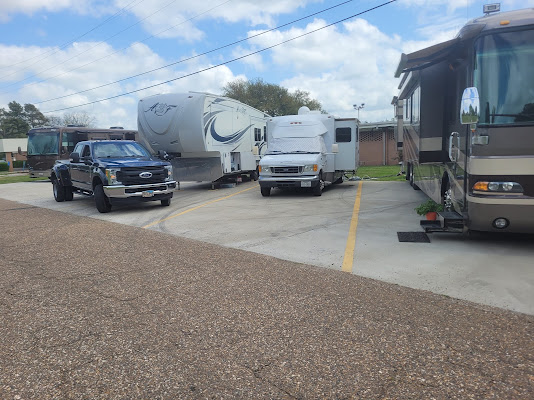
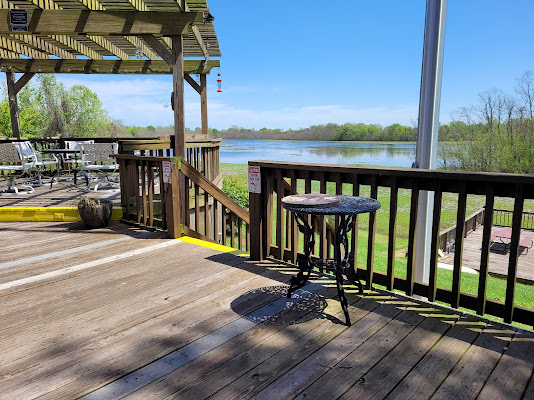







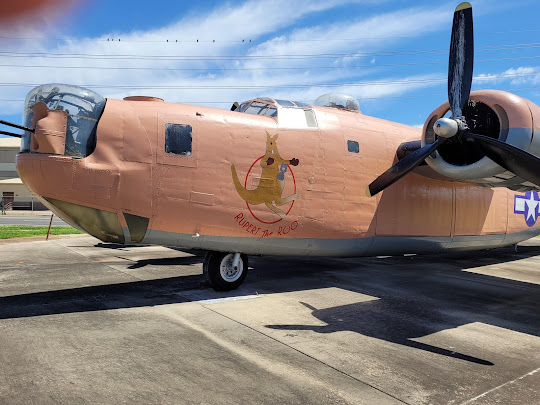



















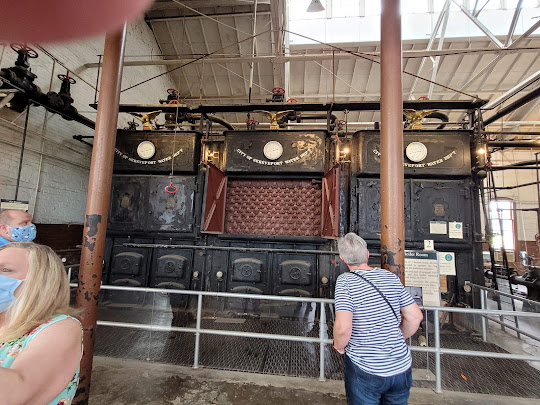

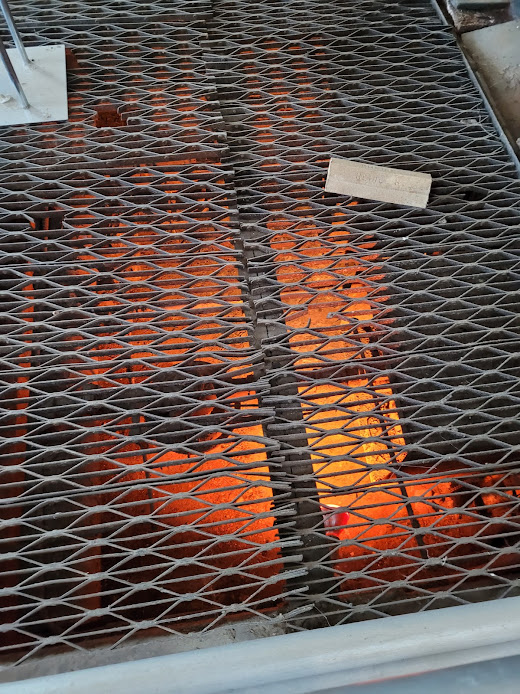




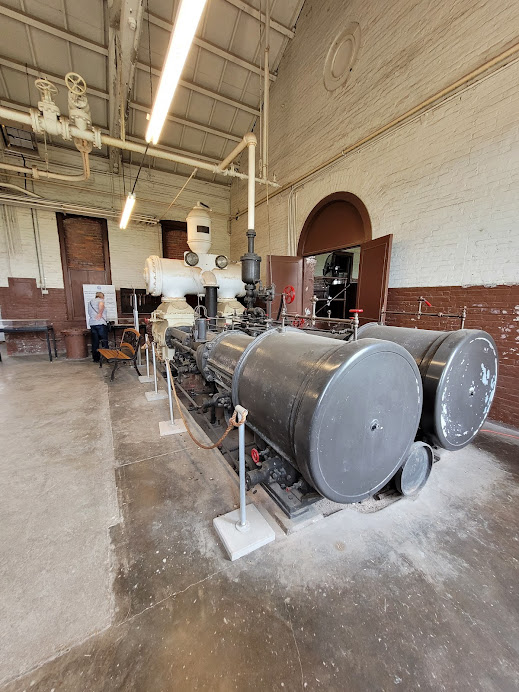













No comments:
Post a Comment